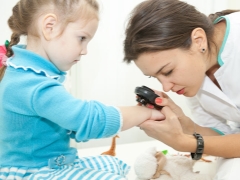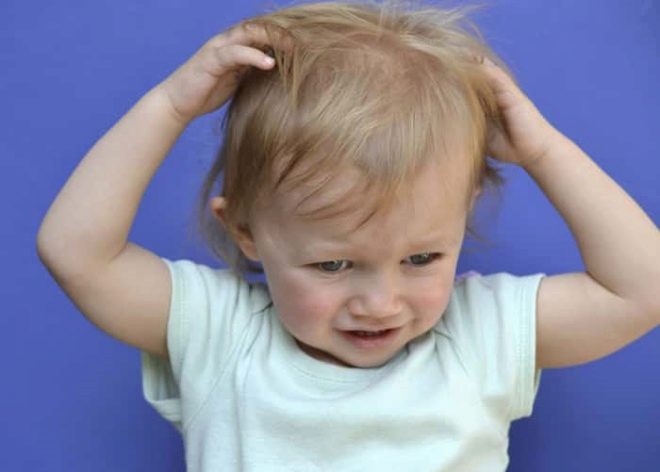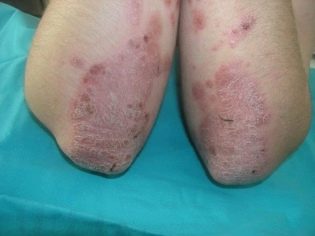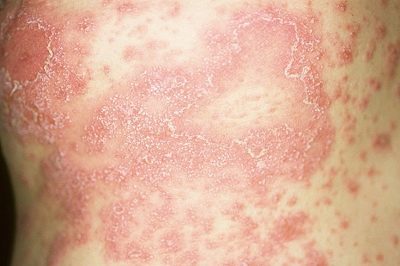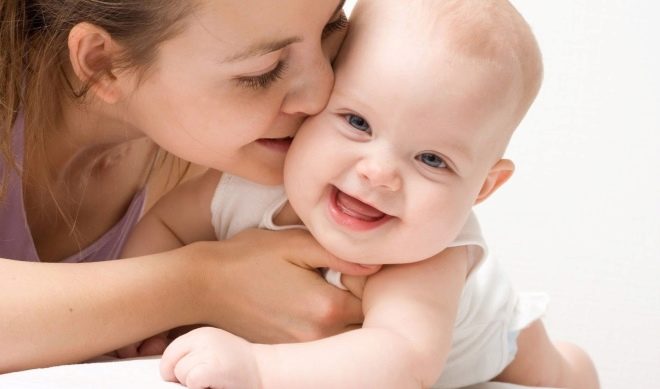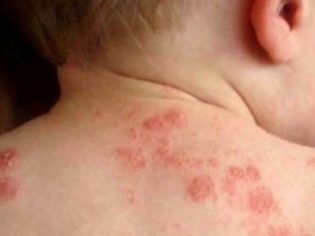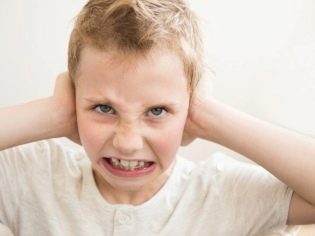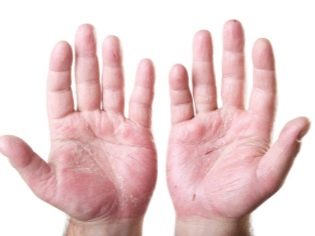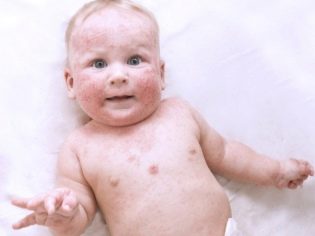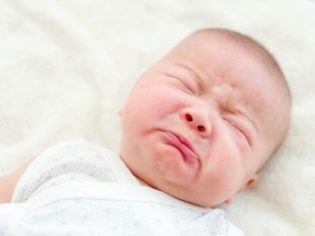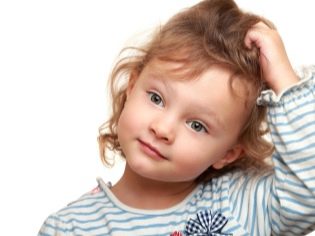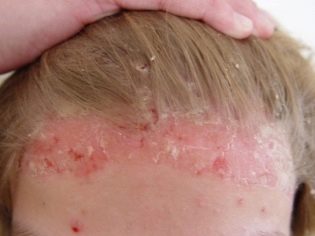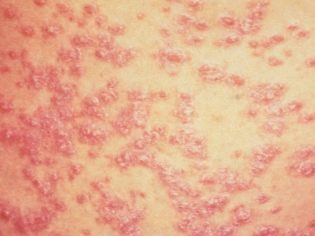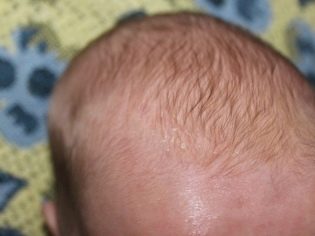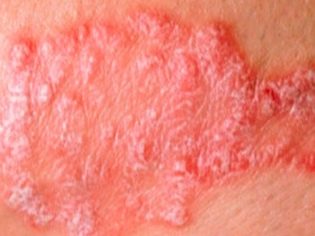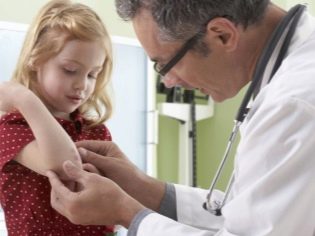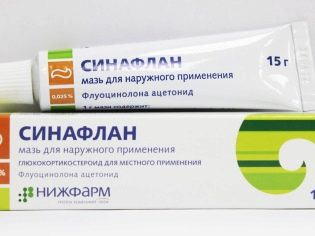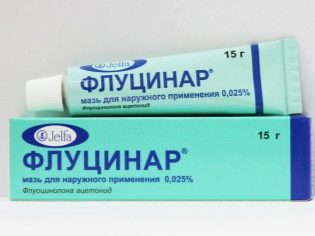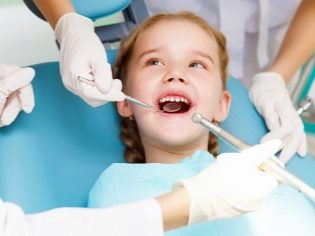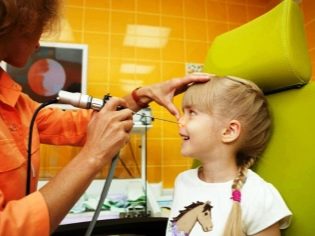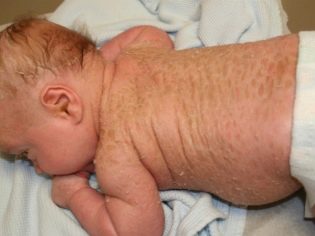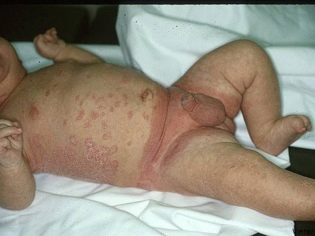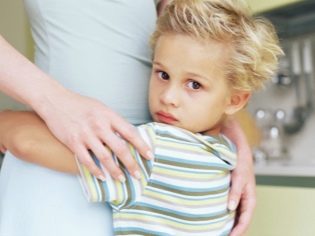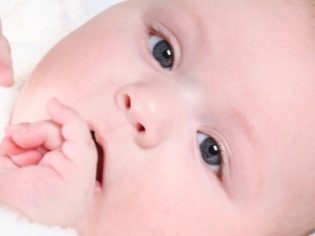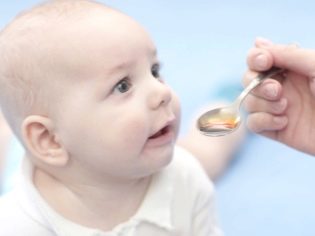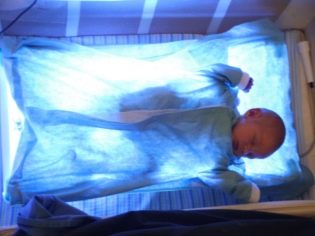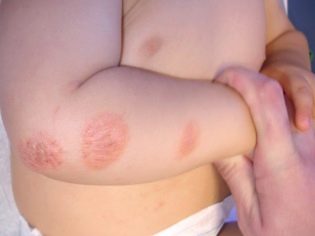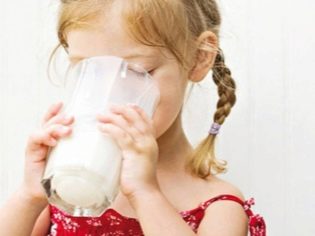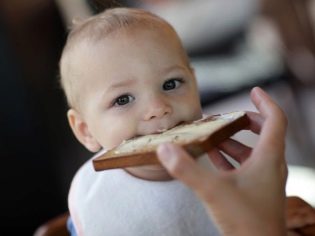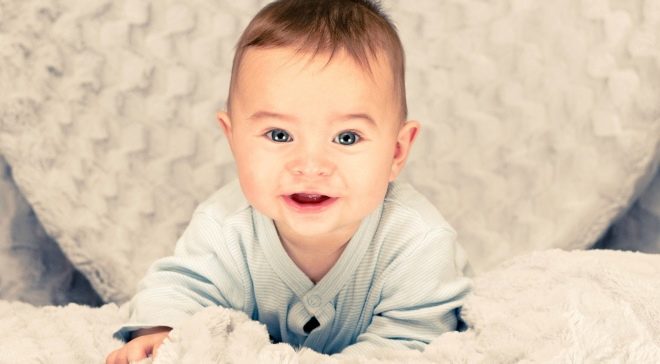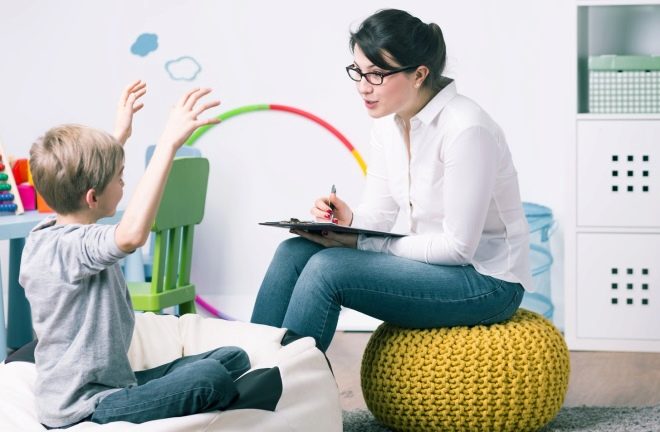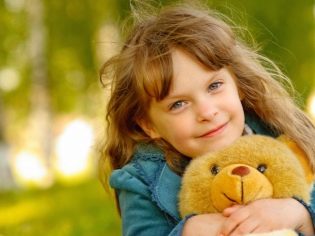Symptoms and treatment of psoriasis in children
Psoriasis occurs in about 8% of children with dermatitis. Not so long ago, it was believed that the scaly deprive affects only adolescents and adults, but now doctors have recognized that the first signs of the disease can appear at any age - in newborns, infants, and especially younger schoolchildren. What is this disease and how to treat it, we will explain in this article.
What it is?
Lime scab (psoriasis) - a disease not contagious, which has nothing to do with the infection. Ailment is always chronic. The earlier the psoriasis is detected in children, the more chances, together with doctors, to achieve stable remission.
With this ailment, spots are formed on the child’s body, which are papules, prone to merge among themselves. Combining, papules form plaques, sometimes quite large in size. The papules themselves are excessively overgrown cells of the epidermis - keratinocytes.
These cells mature in the deeper layers of the skin, move to the surface and as a result exfoliate. This exfoliation is intended by nature to ensure that the skin is not coarse. This process usually takes about a month. In a psoriasis patient, keratinocyte movement is accelerated due to excessive production of lymphocytes and macrophages. Skin cells go through all stages in 3-5 days. This violates the natural processes, and dead keratinocytes are not peeled off, but grow on the surface of the skin. So papules are formed, and behind them are plaques.
To cure psoriasis today is impossible, but if you follow all the recommendations of the doctor you can achieve remission, in which the symptoms will be minimal and will not cause inconvenience to the child.
Causes
The reasons why the baby’s skin is affected by scaly deprive today remain an unsolved mystery for medicine and science. At various times, bacteria and fungi, viruses, were considered as “culprits”, but these versions did not withstand criticism. Today, experts see in the mechanism of the development of the disease an autoimmune trace, that is, the child’s own immunity creates such a number of aggressive immune cells that they infect healthy cells of their own organism.
Everything related to autoimmune processes, medicine is not fully understood, they are not well understood. But many years of observation of children with psoriasis have shown that there is a definite connection between the occurrence of a disease by several factors, which today consider The most likely causes of psoriasis are:
Heredity. If in the last 3-4 generations there were people suffering from psoriasis, then the probability that the child will manifest this ailment is at the level of 25-30%. One of the parents with psoriasis increases this probability by up to 50%, if both mother and father have scaly deprive, then the child will have it with a probability of 80-85%.
Thus, psoriasis is inherited from the father or mother.
Strong emotional stress. Children with an unstable nervous system, hysterical and overly sensitive, are most susceptible to the disease. The pathological process can be triggered by any events - relocation, team change, the birth of another child in the family, the divorce of parents.
Infected infections.Sometimes the first signs of psoriasis appear after the child has had a severe flu, a complicated sore throat, or another disease that has been accompanied by an immune “shake-up”.
Hormonal imbalance and metabolic problems. The effect of hormones on the condition of the skin is undoubtedly, a deficiency of vitamins and microelements as a possible cause of the disease is still being discussed by doctors.
First signs
The first signs of the disease are not easy to recognize, because it is masked by any dermatitis. Most often in young children up to one year old and a little older, the initial stage appears as diaper rash. In the folds of the skin appears redness, rash. For the onset of the disease, such parts of the body as the armpits, the buttocks, the head, including the hairy part of the face, are characteristic. On the heels and palms, primary papules in children occur infrequently.
Only careful observation of the papules will help to suspect psoriasis. The main sign of scaly depriving - peeling.
Papules begin to peel off, gradually crusts are formed. In contrast to prickly heat and diaper rash, papules do not disappear under the influence of fresh air when taking air baths, and only increase in size, capturing more and more new areas of healthy skin.
Often, plaques are first formed in places subjected to friction and pressure - on the elbows, on the knees on the outer extensor side. The behavior of the child changes, the baby, who can not scratch itchy papules, becomes moody. Older children begin to comb plaques. Sometimes a child has the appearance of white spots on the nails. So-called nail psoriasis may be a separate symptom when the skin remains clean, and can complement the picture of extensive psoriasis.
Types and symptoms
There are several forms of the disease, which differ from each other not only in symptoms, but also possible future projections:
The plaque. Synonyms - ordinary, vulgar, simple. This is the most common form of the disease (occurs in 8 out of 10 sick children), in which the plaques slightly rise above the skin, have a red or deep pink color. The top of papules and plaques may be gray or silver, the skin on the surface of the plaques is dry and flaky. The scales when touched easily and naturally exfoliate. Below them is a thin and vulnerable skin that quickly gives way to injury. Plaques quickly grow and merge with the next.
Back. This is scaly versicolor of the flexor limbs. In this form, there are no protruding plaques, there are red, inflamed, fairly even non-protruding spots that are located in the folds of the arms and legs, in the folds of the skin in the groin area and under the arms. Remission in this form is difficult to achieve, because the affected areas are almost always exposed to clothing, sweat. Often, reverse psoriasis is complicated by secondary fungal and bacterial infections.
Teardrop. This form is considered one of the easiest. Such scaly versicolor usually begins after suffering streptococcal infection (tonsillitis, pharyngitis, streptoderma). Small dots, like drops or tears, red or purple dots appear on the baby’s skin. A large area of the body - back, legs, shoulders, neck, head - is striking a drop-shaped disease.
Pustular. It is also called exudative for a characteristic type of rash. On the skin of the child form pustules with liquid, around which the skin becomes inflamed, heated and becomes very thin. When a secondary infection joins, the pustules fill up with pus. Most often, such formations appear on the forearms and legs, but they can capture quite large areas of the whole body, especially since pustules tend to merge and grow. This form is considered one of the most difficult.
Erythrodermic. This form of the disease is characterized by large-scale peeling and flaking of the skin over a large area.This process proceeds with severe itching, pain. Often this form is a consequence of the complication of ordinary simple plaque psoriasis. This form can even be fatal if the skin detachment is too extensive. If such a form manifests itself for the first time and the area of the affected skin is strictly limited, this may be a sign of the onset of ordinary simple psoriasis.
About 10–12% of children with psoriasis develop psoriatic arthritis, in which the joints swell up and become painful to the touch.
Treatment
Traditional
Usually, children for whom psoriasis manifested and was confirmed for the first time are sent to a hospital for treatment. Subsequently, during periods of exacerbation, treatment may be home.
To remove the sensitization of the body, administration of calcium-gluconate and chloride solutions is prescribed. With severe itching, the child is given antihistamines - "Suprastin", "Tavegil" other. Intramuscularly, the child is injected with preparations of vitamins of group B.
If treatment is ineffective, prescribe hormonal drugs, eg, "Prednisolone»A long course of 2-3 weeks. The dose of the drug is gradually reduced so that by the end of the course it will be nullified smoothly. Salicylic, sulfur-tar ointment and prednisone ointment are applied to the plaques. Other preparations for treating the skin - “Colloidin”, “Antipsorin”, “Sinaflane, Flucinere, theophylline ointment. The choice of the drug is the task of the doctor who assesses the degree and severity of the disease.
In some cases, doctors prescribe immunosuppressive drugsthat inhibit the activity of immunity. Manifestations of psoriasis with it are reduced, but also the natural protection of the child against viruses, bacteria and other pathological organisms, too.
Therefore, there is nothing surprising in the fact that a child undergoing treatment for scaly depriving starts to get sick more often.
The main approach in skin care is moisturizing. To do this, water procedures for such a child are carried out more often, they use baby cream after washing and completely refuse all drying preparations - “Sudokrem, Zinc ointment and even regular baby powder.
If psoriasis is found, then it is important to eliminate all foci of inflammation in the body. A child with adenoids is often prescribed an operation for the complete or partial removal of the tonsils, for diseases of the teeth, treatment by a dentist is indicated. Upon completion of the first course of treatment, the child is shown sanatorium-resort treatment, within which the child can receive therapeutic baths, relaxing procedures, massage, and his parents consult psychotherapists and psychologists on how to adapt a child with psoriasis to their peers.
A complete cure is impossible, but modern drugs and methods allow to achieve long-term remission.
In order for the symptoms to not return as long as possible, doctors prescribe mild sedatives if the child is often nervous and highly susceptible to stress, vitamins, as well as proper nutrition. For the treatment of psoriasis has developed its own special diet, about her - below.
The development of medications for psoriasis continues; every year new clinical drugs are announced for clinical trials, so doctors do not rule out that a universal medicine for scaly depriving will soon appear.
Alternative
Some resorts in Russia, Turkey, Bulgaria and other countries offer hydrotherapy. Such procedures are carried out at resorts with open thermal springs, and, according to parents, the result from the course of such treatment lasts for several months - the symptoms of simple psoriasis do not return during this time. The essence of the procedure consists not only in the effect of water on the skin, but also in the work of small fish of the carp family living in such sources. They gently gnaw plaques, without touching healthy skin.
Good results shows PUVA therapy. When it is applied to the skin psoralen and affect it with ultraviolet rays of the long wavelength or medium wave spectrum. Sometimes drugs with psoralen are taken orally. After a course of such procedures in 85% of patients the skin is cleansed.
The disadvantages are that the effect is still temporary, and children are often sick from the drugs with psoralen, they show an upset appetite, headaches, dizziness.
It is up to parents to choose PUVA therapy or not. But they should know that the frequent use of this method of treatment increases the likelihood of developing malignant skin tumors tenfold.
According to reviews, thistle oil and liquid fish oil have a good effect on the skin. It is applied to the skin, and also give the child to drink. Today, there are many methods of alternative treatment of psoriasis - from massage in water to phototherapy, but none of them cures the disease, but only has a temporary symptomatic effect. therefore Do not trust the advertising clinics that promise a full cure for a reasonable fee. The fee is usually unlimited, and the result is disappointing.
Folk remedies
Psoriasis on the head, according to parents, is amenable to treatment with fish oil and celandine juice. After washing, geranium essential oil is applied to the skin. To cleanse the body, the child is given sea buckthorn oil by 1-2 teaspoons per day. Psoriatic plaques are easily peeled off with moistened oatmeal, and then smeared with baby cream.
The appearance of psoriasis on the elbows requires a different approach - often used for treatment birch tar and machine grease. Both products have an obvious minus - an unpleasant smell, and after all, after lubrication of the affected areas, it is necessary to endure for about half an hour. After this treatment, the skin is washed tar soap.
With psoriasis on the body do baths with chamomile decoction, succession, salt baths with therapeutic salts. After this water treatment, the baby’s skin is treated with sea buckthorn oil.
Treatment with folk remedies should not replace traditional medical treatment, but it is quite possible to supplement it with the use of folk recipes. In any case, most dermatologists do not object to this at all.
Nutrition
A child with psoriasis is prescribed a diet devoid of animal products. Allergenic foods, especially chocolate and citrus fruits, are prohibited for the child. You can not eat pickled foods, factory sweets and smoked meats. During periods of aggravation, food is prepared without salt. Without restrictions, the child can eat fresh vegetables and fruits rich in fiber, as well as low-fat dairy products. Of the most preferred buckwheat cereal.
Ready-made meal planning solutions offer the Pagano diet and the Ogneva diet. The Pagano diet is based on eating a large amount of cereal, as well as twice a week fish, steamed, boiled or baked without oil. Diet Fire recommends a large number of fruits and vegetables.
Strictly prohibited in psoriasis:
Coffee and tea;
fat meat;
White bread;
semolina and rice porridge;
canned food;
butter;
hard and processed cheeses with a high fat content;
honey and sweets;
potatoes;
tomatoes;
eggplants.
With proper nutrition, a general improvement in the condition of the skin occurs in about a week. Diet is an integral part of comprehensive treatment and reduces the frequency of exacerbations of the disease.
Psychological help
School-age children and especially adolescents need to systematically provide psychological assistance and support. This is especially true if the child’s plaques appear in a prominent place - on the face, on the head, on the uncovered part of the arms.Many children already at an early school age are beginning to be shy of their illness, and in the absence of support this can lead to the development of serious depressions, social phobia and other unpleasant psychiatric consequences.
On the other hand, a decrease in nervous tension reduces the number of exacerbations, and this is a fact proven by doctors. There are programs for the rehabilitation of children with psoriasis, for help, you need to contact a psychotherapist, a psychologist. Classes should be attended with the child, as parents are taught the rules and techniques of psychological correction.
Forecasts
The prognosis of the disease medicine as conditionally unfavorable. This status is given for the fact that psoriasis is always chronic. In most children, psoriasis slowly progresses and by adolescence, during the period of hormonal changes in the body, progress becomes more pronounced, exacerbations occur more often.
Whatever the quality and correct treatment, the recovery of the child is completely impossible. But a responsible approach to therapy is a guarantee that the quality of life of the child will be much higher.
Parents who refuse traditional treatment and give preference to unconventional or alternative, risk to “start” the child’s illness so much that it will become disabled.
About what psoriasis is and how to treat it, see the next video.
